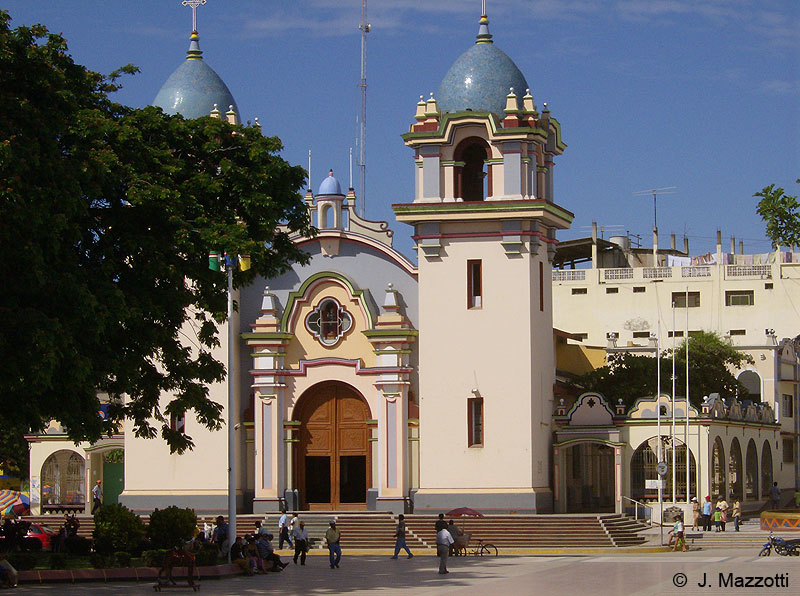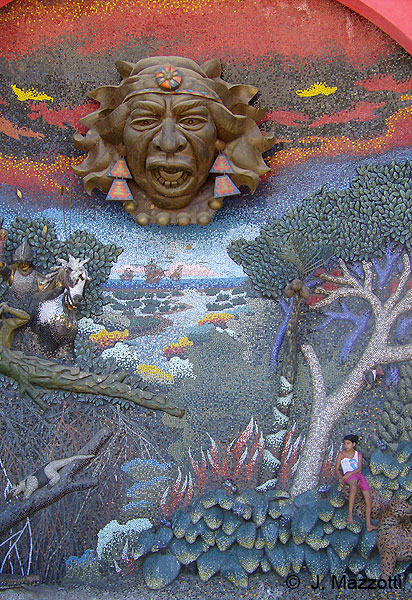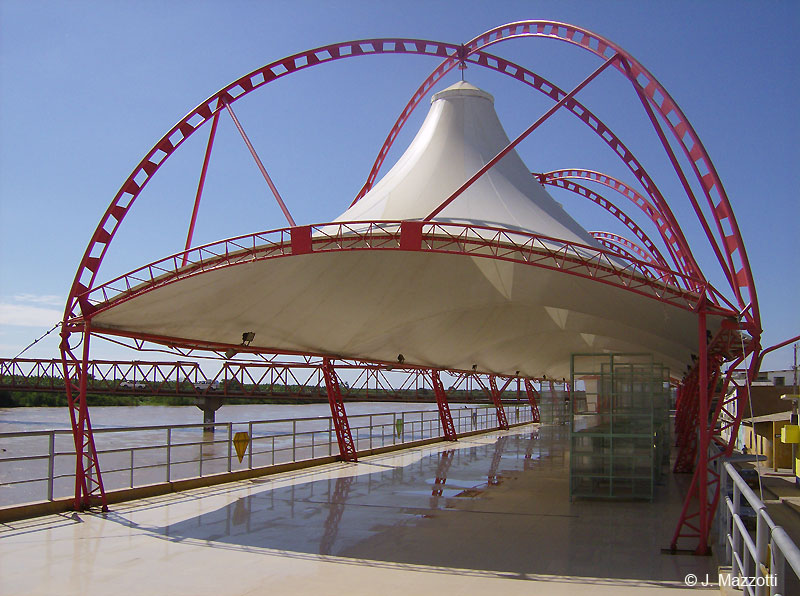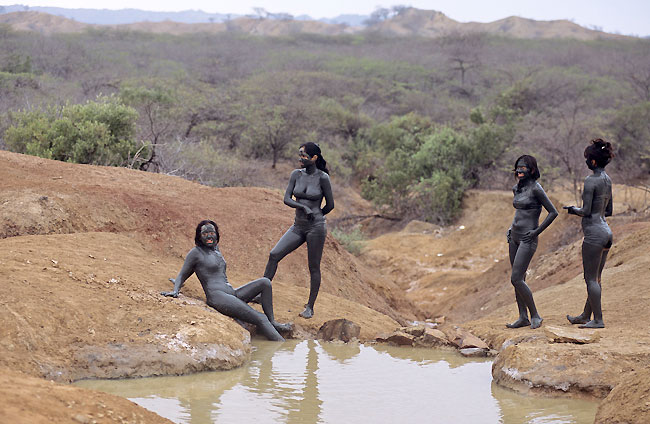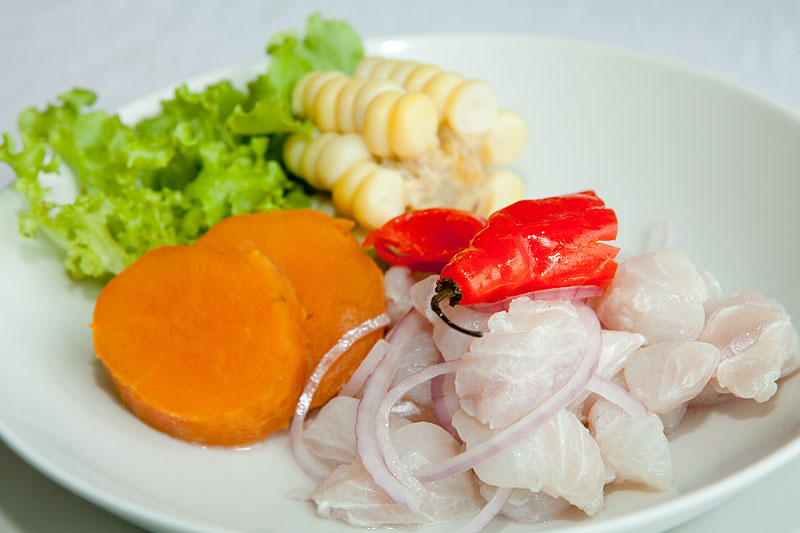Tumbes City
The city of Tumbes is the capital of the province and department of the same name, and is located in the northern Peruvian coast, only 30 Km from the Ecuadorean border, 23 feet (7 m.) above sea level. The city is located along the river Tumbes, the only river in the Peruvian coast by small boats, is surrounded by a vast tropical vegetation and agricultural areas, a uniquely green part of coastal Peru.
Given its proximity to the Equator and the influence of the warm ocean current of the Gulf of Guayaquil has a semi tropical climate with an average temperature of 27°C in the summer months (December - April) reaches 40°C and no rain.
Its name derives from "Tumpis", excellent sailors, settled in the far northwest of Peru, aboriginal peoples that inhabited this area to the arrival of Spanish conquerors in the sixteenth century.
Its buildings are republican and modern, has a modest economic development. Near the main square houses nineteenth century some wood and split-bamboo, pedestrian streets and modern monuments around which local people used to meet, local and craft galleries. Within the city's shopping area, banks, ATM, medical services, craft sales, Internet booths, local tour operators, casinos, nightclubs, bars and restaurants, highlighting the seafood and a good infrastructure of hotels. The city's public transport is based on mototaxis (motorcycle taxis) and few air-conditioned taxis.
Tumbes Tourism and Travel Information
Plaza Mayor (Main Square)
Restyled several years ago, a key attraction is the mosaic-covered acoustic shell. Known as "The Meeting of Two Worlds" the image alludes to the arrival of the Spanish and the natural wealth of the area. In the centre, visitors can see a depiction of the chief Chilimasa, head of the area that resisted the Spanish armies. Local residents usually walk or rest in the shadow of the trees known locally as "matacojudos" and in English as Kingelia (Kingelia pinnata). Around the square are located the Cathedral, City Hall, City Library and some colonial houses. The feast days and holidays is the meeting point of the people.
San Nicolás de Tolentino Church - The Cathedral
Built in the 17th century by Augustinian priests. This Baroque church features two pointed arches, a double-gabled roof, and pointed domes covered with mosaics. Inside the church, the high altar is carved from wood and features mosaics, while the stained-glass windows portray scenes from the life of Jesus, with images of saints and the Virgin Mary, as well as a fabulous sculpture of Christ.
Malecón III Milenium
A riverwalk located on the right bank of the Tumbes River, the pier protects the city from the river's churning waters during the rainy months (January, April), offers nice views of the area. From the top of the pier, the riverbank scenery and flowery Tumbes valley can be seen. Located 1 block from the main square, is on the southern edge of the city and building emblematic of the city. It was restored after heavy flooding caused by El Niño in 1998.
Pedestrian Esplanades
There are many esplanades inviting the visitor to stroll through the city. The best are La Concordia, Los Libertadores, Jerusalén and Triunfino. The Boulevard of La Madre, the plazas El Beso and Bolognesi, and the park of El Avión are areas often frequented by the citizens of Tumbes. From the pedestrian street, visitors can enjoy mosaics depicting scenes from the birth, life, suffering and death of Jesus, culminating in a sculpture that portrays the ascension of Christ.
Palo Santo Tourist Lookout and Private Natural Area
This is a lookout constructed on top of the highest hill of the city, just five minutes away by car, from where you can see a great amount of the geography of the area. The lookout is located inside the Private Natural Area called Palo Santo, which is made up of forests housing characteristic native trees like carob trees, palo santo trees, spruce trees, and charán trees. The zone is home to thirty species of birds, many of them endemic to the Tumbes Region. A trail has been created for visitors to observe the local flora and fauna. It is open all year long.
Cabeza de Vaca - Archaeological Site
An archaeological site made from adobe and stone and occupied, according to researchers, since pre-Inca times, during the era of the Chimú culture and even during the Inca era itself. Pottery fragments, bones and stone tools have been discovered here, as well as a workshop in which shells including the Spondylus and other molluscs were worked on. An 8 Km pebble path has been discovered, connecting this archaeological site with the coast. Other findings include an irrigation channel and a truncated pyramid or adobe huaca known as the Cabeza de Vaca (Cow Head) (“huaca” means shrine), which is 250 metres long, 100 metres wide and 15 metres high. Site museum. Located 5 Km. / 3 miles from city of Tumbes (10 minutes by car) in the district of Corrales.
Caleta La Cruz
Located 16 Km / 10 miles southwest of the city of Tumbes, and is the historical place where he landed the Spanish conquistador Francisco Pizarro and his forces in 1532 to begin the conquest of Peru. In its beaches placed a cross as a symbol of Christianity, which gave the name of the current Caleta La Cruz. The true cross is now housed in the National Anthropology Archeology and History Museum in Lima. Caleta La Cruz is a tranquil spa and clean waters ideal for some water sports, horseback riding enter many others, has all the services, lodging, restaurants Internet, a fishing creek and is one of the most visited beaches during the summer by the locals, especially so-called kilometer 19.
Hervideros - Hot Springs
Located 40 Km / 25 miles from city of Tumbes (45 minutes by car). South of Zorritos, the water bubbles through a layer of fine clay where it forms a mixture much like the pure liquid clay used by potters, with elements of iodine, chlorine, and iron which is supposed to have medicinal properties. The concentration of mineral substances in the solution gives it the aspect of a volcano of mud or some type of boiling liquid.
Cuisine of Tumbes
The warm climate enjoyed by the north coast of Peru offers our discerning visitors a variety of seafood and fish that delight the palate. There is nothing better than enjoying the range of flavors of cebiches and sudados with an ice-cold beer or a chicha de jora. meat fans can also enjoy our delicious locally-raised goat. These, as well as a huge variety of sweet and savory dishes alike, make the north coast a destination worth visiting.
The northern regions have a warm climate and its sea holds a generous bounty of fish that are perfect for seafood recipes. Highlights of its cuisine include "cebiches" and "sudados", which combine fish with tangy, spicy and aromatic herbs, creating fresh and intense flavors.
The gastronomy of Tumbes is famous for dishes based on sea bass, grouper, sole, swordfish, as well as mollusks and shellfish from the ocean and the mangroves such as black scallops, crabs, oysters, lobsters, and prawns, you can not fail to enjoy its famous seafood, such as conchas negras (black scallops), cebiche, chili prawns or majarisco.
The typical dishes of the Tumbesino cuisine are based on seafood, cebiche of black scallops, crab, or shrimps, or cebiche mixto and Tumbiresas covered by yucca and banana balls broth with dominicos, meat, red peppers, eggs, olives, raisins, flour, coriander and other herbs.
Other specialties include the shrimp omelette, chupe de cangrejos, and crabmeat omelette.
A typical beverage in the region is the chinguirito, which is obtained by combining pipa (the milk of a soft coconut) with the famous grape brandy called pisco.
Cebiches are made from fish, black shellfish or seafood, marinated in lemon juice, hot peppers and salt, and complemented with onion, yam and steamed corn. Chinguirito is a special version of cebiche which uses the dried salted meat of the guitar fish. For the main course, sudado or steamed fish are recommended.
Fried yucca, parmesan shellfish and chifles (slices of fried plantain) are starters that can be shared. All the food in the north is accompanied with ice-cold beer or chicha de jora.
Aside from restaurants, visitors can also enjoy the flavors and quality of the chicherías, where food is cooked in mud pots over a wood fire, or in “huariques”, which are known for their unique homemade flavor.




